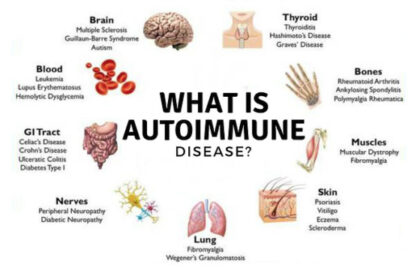Walking down the cleaning aisle at any supermarket or big box store, you’ll find shelves stocked with countless cleaning products making lofty claims about their ability to leave your home sparkling clean. However, many of these conventional cleaners contain concerning ingredients and chemicals that can negatively impact human health over time.
Recent research has linked the long-term use of certain chemical-laden cleaning products to an increased risk of developing heart disease, cancer, lung conditions, and other chronic illnesses. This is because ingredients like phthalates, VOCs, ammonia, and chlorine emit noxious fumes and contain compounds that can be absorbed through the skin or inhaled as microscopic particles.
While keeping a clean, sanitary home is important, it shouldn’t come at the cost of your family’s health and wellbeing. The good news is that with just a few simple, affordable ingredients, you can easily make your own non-toxic, all-purpose cleaner right at home. Not only is this better for your health, but it also reduces plastic waste and saves you money.
In this article, we’ll outline the top five conventional cleaners to avoid due to their connection to serious health concerns. We’ll also provide recipes and instructions for making your own natural, DIY all-purpose cleaner using ingredients like vinegar, baking soda, lemon, and essential oils. Once you realize how easy and effective these homemade options are, you may never buy toxic store-bought cleaners again!
Transitioning to more natural cleaning products is a simple way to protect the health of your family and home. The risks posed by chemicals in conventional cleaners often go unnoticed in our day-to-day lives. However, arming yourself with the information and homemade solutions in this article will make it easy to implement safer cleaning habits.
The Dangers Of VOC Exposure From Household Cleaning Products
The volatile organic compounds (VOCs) emitted from conventional cleaning products can negatively impact the health of everyone in a household – adults, children, and pets included. Here are some of the main concerns with VOC exposure:
For Adults:
- Increased Risk of Cancer – VOCs like formaldehyde are considered carcinogenic and linked to leukemia and lung cancer.
- Liver and Kidney Damage – VOCs put strain on these organs as the body works to detoxify itself.
- Eye, Nose, and Throat Irritation – VOCs can cause burning eyes, runny noses, coughs. Headaches and dizziness are common too.
- Exacerbation of Asthma – VOCs irritate lungs and worsen asthma episodes in those with the condition.
- Cardiovascular Effects – VOCs inflame blood vessels raising risk of blood clots and heart attacks over time.
For Children:
- Developing bodies and brains make children especially vulnerable to toxins. VOCs can impair development.
- Higher respiration rates also lead to children inhaling more VOCs than adults.
- Links found between high VOC exposure and behavioral issues like ADD/ADHD.
For Pets:
- Respiratory Issues – Pet’s smaller airways are irritated by VOCs. This can lead to coughing, wheezing, and difficulty breathing.
- Liver and Kidney Problems – Just like humans, VOCs strain pets’ organs.
- Increased Cancer Rates – VOCs have been tied to increased bladder cancer in dogs for example.
Clearly, VOCs in cleaning products have the potential to negatively impact human and animal health in concerning ways. This makes minimizing exposure incredibly important for everyone in a household.
5 Household Cleaning Products To Avoid
A recent study identified concerning levels of volatile organic compounds (VOCs) being emitted from popular conventional cleaning products. Exposure to these toxic chemicals has been linked to increased risk of cancer, lung disease, and other chronic health issues. Here are five of the most hazardous conventional cleaners to avoid:
-
Conventional Air Fresheners
Air fresheners tested released over 100 VOCs on average, the most of any products. Many contain endocrine-disrupting phthalates which can cause developmental, reproductive, and neurological issues. Opt for natural fragrances like essential oils instead. Open windows regularly too.
-
Antibacterial Cleaners
Those containing triclosan, a pesticide, can interfere with hormone regulation and contribute to antibiotic resistance. Safer alternatives include diluted vinegar, tea tree oil, thyme oil, and other natural disinfectants. Avoid overusing antibacterial products.
-
Chlorine Bleach
When chlorine bleach mixes with other cleaners like those containing ammonia, it forms dangerous chlorinated VOCs including chloroform, a potential carcinogen. Non-chlorine bleaches like oxalic acid or citric acid are much safer. Use bleach only when truly necessary.
-
Ammonia-Based Glass & Window Cleaners
Exposure to ammonia gases irritates lungs and can cause breathing issues. It reacts with bleach to form toxic chloramines. Skip products with ammonia and use a 50/50 white vinegar & water solution instead. Never mix ammonia and bleach!
-
Multipurpose Cleaners
These emitted high levels of hazardous VOCs in the study. They often contain alkylphenol ethoxylates that are toxic to aquatic organisms. Make a simple DIY cleaner by combining baking soda, Castile soap, and water instead.
Make Your Own DIY Non Toxic All-Purpose Cleaner At Home:
Ingredients:
- 1/2 cup distilled white vinegar (cuts grease, removes hard water stains, disinfects)
- 1/4 cup baking soda (deodorizes, scours, softens water)
- 10-15 drops Amrita Lemon, Lavender, or Tea Tree Essential Oils
- 2 cups warm water
Directions:
- Combine vinegar, baking soda, and essential oil in a spray bottle. Allow to fizz.
- Once fizzing stops, add warm water and shake gently to combine.
- Use on countertops, mirrors, appliances, floors, walls, and other surfaces.
- Shake before each use. Makes around 32 fluid ounces.
This simple but highly effective recipe harnesses the cleaning power of vinegar and baking soda without any of the astounding 530+ VOCs found in toxic conventional cleaners. You’ll get a streak-free clean while keeping your family’s health a top priority.
In Conclusion
As we’ve seen, many conventional cleaning products contain a range of volatile organic compounds that can accumulate in indoor air and raise risks of developing serious health conditions. However, by being mindful of labels and avoiding products with concerning ingredients, we can limit exposure in our homes.
Additionally, making your own natural cleaning solutions is a simple way to reap the benefits of a clean home without compromising your family’s health. Using ingredients like vinegar, baking soda, and essential oils provides an easy alternative to toxic chemical cleaners.
While more research is still needed, these tips can help you implement safer cleaning routines right away. At the end of the day, protecting your family should be the top priority – not how much grease a product promises to remove.
Take control of the cleaners under your sink and feel confident you’re making choices that limit hazardous indoor air pollution. Small steps like these can have a lasting positive impact on your health.





